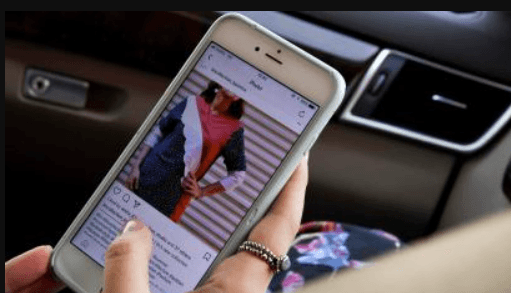Learnsters 's Key Ideas from Hooked - How to Build Habit-Forming Products
by Nir Eyal
Ideas, facts & insights covering these topics:
19 ideas
·91.6K reads
447
8
Explore the World's Best Ideas
Join today and uncover 100+ curated journeys from 50+ topics. Unlock access to our mobile app with extensive features.
1.52K
21.3K reads
THE HOOK MODEL
- The Hook Model explains the four-phase process that companies use to form habits.
- The four phases are a trigger, action, variable reward, and investment.
- For companies, the desire is to achieve the goal of unprompted user engagement with their products.
- A product or service is considered successful if users come back without the need for costly advertisement or aggressive messaging.
1.65K
11.8K reads
THE HABIT ZONE
- User habits are good for business because they create unprompted user engagement.
- Companies can determine their product’s habit-forming potential by plotting two factors: frequency and perceived utility.
- Frequency is the level of engagement while the perceived utility is the benefit to the user
- To come up with a real game-changing product your product should be in the shaded portion of the graph
- Either be highly frequent like google or highly value-adding like amazon
1.54K
8.27K reads
TRIGGER #step1 of the hooked model
- A trigger is what starts a behaviour. It is the spark in the engine. There are two types of triggers: external and internal.
- External triggers exist as part of the environment. They include phone apps, emails, photographs, etc. Internal triggers are mental and come from within the mind.
“Habit forming technologies start changing behavior by first cueing users by a call to action.”
1.48K
6.38K reads
External Triggers
External triggers communicate the next action that a user should take.
For example:
Many e-commerce websites feature prominent buttons asking users to Buy Now or Subscribe.
Types of external triggers:
- Paid triggers. These include advertisements, search engine marketing, and other paid channels
- Earned triggers. These include store placements and honourable mentions
- Relationship triggers. Examples of relationship triggers include Facebook likes and recommendations by friends
- Owned triggers. These take up a piece of real estate in a user’s life. They include things like apps and opt-in newsletters
1.48K
4.44K reads
Internal Triggers
“Internal triggers tell the user what to do next through associations stored in the user’s memory.”
- Emotions, particularly negative emotions, are powerful internal triggers.
- Fear, Greed, lust are some of them
1.49K
5.04K reads
ACTION #step-2 of hooked model
Action follows the trigger phase.
“The trigger, driven by internal and external cues, informs the user of what to do next.”
Ingredients that are needed to initiate any and all behaviours:
- Sufficient motivation
- Ability to complete the desired action
- Presence of the trigger
In other words, B = MAT (Motivation, Ability and Trigger).
Humans are motivated to seek pleasure and avoid pain. To seek hope and avoid fear and to seek social acceptance and avoid rejection.
1.5K
3.84K reads
Key to innovative products
To create a truly innovative product:
- Understand the reason why people use a product or service
- Layout the steps that the customer must take to get the job done
- Remove steps until you reach the simplest possible process
1.51K
3.99K reads
Make it SIMPLE
- To increase the likelihood that an action will occur, product designers should focus on simplicity. Designers can also use heuristics to influence user behaviour.
Elements of simplicity:
- Time. An indication of how long it takes to complete an action
- Money. The fiscal cost of doing something
- Physical effort. The amount of labour required to take action
- Brain cycles. The amount of brainpower needed to complete an action
- Social deviance. The acceptability of a particular action
- Non-routine. How much the action disrupts existing routines
1.51K
2.95K reads
VARIABLE REWARDS #step-3 of the hooked model
- Rewards are unpredictable in the timing and size of reward.
- Variable rewards drive more user activity than fixed rewards. Companies that offer a chance at variable rewards such as Facebook, Pinterest, and Twitter get more users hooked to their products.
“Experiences with finite variability become increasingly predictable with use and lose their appeal over time. Experiences that maintain user interest by sustaining variability with use exhibit infinite variability.”
1.46K
2.61K reads
Variable reward techniques
Types of variable rewards:
- Tribe. Rewards of the tribe are driven by our social connections to others
- Hunt. Pursuing material things and resources is rewarding in itself
- Self. Humans have intrinsic motivation to better themselves and gain competency
1.46K
2.78K reads
Some examples of variable rewards
- Variable rewards can lead to compulsive behaviour on the part of the user. There is email addiction, social media addiction, and even addiction to news cycles. This form of addiction happens because with variable rewards you never know what you are going to get.
- Only by understanding what truly matters to users can companies create the right variable rewards.
For example:
Quora, the answer and question forum triumphed over Mohalo, a similar site, because Quora did not offer monetary rewards.
1.45K
2.39K reads
INVESTMENT #step-4 of the hooked model
“Before users create the mental associations that activate their automatic behaviors, they must first invest in the product.”
- Escalation of commitment: Once you commit to doing something (invest your time and money), you are likely to commit more over time.
- IKEA effect: People are likely to overvalue their efforts. You see what you have achieved as being more valuable compared to what others have done.
1.46K
2.41K reads
Association with past behaviours
- People seek to be consistent with past behaviours and also seek to avoid cognitive dissonance.
- Cognitive dissonance: Holding contradictory beliefs and attitudes that result in psychological stress when challenged. Humans generally seek to avoid cognitive dissonance.
1.44K
2.39K reads
Various forms of investments
Forms of investment in digital products include:
- Following. Facebook and Twitter allow users to follow others
- Posting. Users can create content on social media that they see as forms of investment
- Reputation. Likes and other forms of acknowledgement make users feel the need to continue using a service or product
- Skill. On some sites, users acquire valuable skills that make it easier for them to use the service or product
1.44K
2K reads
The power of user investment
- Companies should create the goal of making users invest as part of the engagement with their product or service. That way, they will be more likely to come back.
“Investments increase the likelihood of users returning by improving the service the more it is used. They enable the accrual of stored value in the form of content, data, followers, reputation or skill.”
1.43K
2K reads
How to use the hooked model
To build effective hooks:
- Look for internal triggers. Ask yourself what pain is the product relieving
- Find the external trigger. Ask yourself what brings users to your service
- Simplify. Make it as easy as possible for the user to act
- Create a variable reward. Variable rewards leave users wanting more
- Create investment opportunities for the user. Do users store value as they use your product?
1.52K
2.09K reads
The morality of manipulation
With the Hook Model, it is easy to manipulate users. The maker of a product needs to ask two questions:
- would I use the product myself?
- will the product help users materially and improve their lives?
1.44K
2.44K reads
MANIPULATION MATRIX
The manipulation matrix: Has four quadrants that show the different types of creators: the peddler, the facilitator, the dealer, and the entertainer.
- The facilitator. The facilitator helps users create healthy habits
- The peddler. Peddlers rely heavily on advertisements and create products that users rarely want
- The entertainer. Creates a product that they cannot in good conscience claim that the user wants
- The dealer. Dealers create products that they personally cannot use because they are often manipulative and exploitative
1.5K
2.4K reads
IDEAS CURATED BY
We are just another couple of engineering students who love to explore new ideas in the fields of Tech, Productivity, Self improvement & Entrepreneurship
Curious about different takes? Check out our Hooked - How to Build Habit-Forming Products Summary book page to explore multiple unique summaries written by Deepstash users.
Learnsters 's ideas are part of this journey:
Learn more about communication with this collection
Conducting market research
Analyzing data to make informed decisions
Developing a product roadmap
Related collections
Different Perspectives Curated by Others from Hooked - How to Build Habit-Forming Products
Curious about different takes? Check out our book page to explore multiple unique summaries written by Deepstash curators:
Discover Key Ideas from Books on Similar Topics
6 ideas
The Hook Model: How to Manufacture Desire in 4 Steps
nirandfar.com
7 ideas
The Psychology Behind Why We Can't Stop Messaging
nirandfar.com
Read & Learn
20x Faster
without
deepstash
with
deepstash
with
deepstash
Personalized microlearning
—
100+ Learning Journeys
—
Access to 200,000+ ideas
—
Access to the mobile app
—
Unlimited idea saving
—
—
Unlimited history
—
—
Unlimited listening to ideas
—
—
Downloading & offline access
—
—
Supercharge your mind with one idea per day
Enter your email and spend 1 minute every day to learn something new.
I agree to receive email updates









